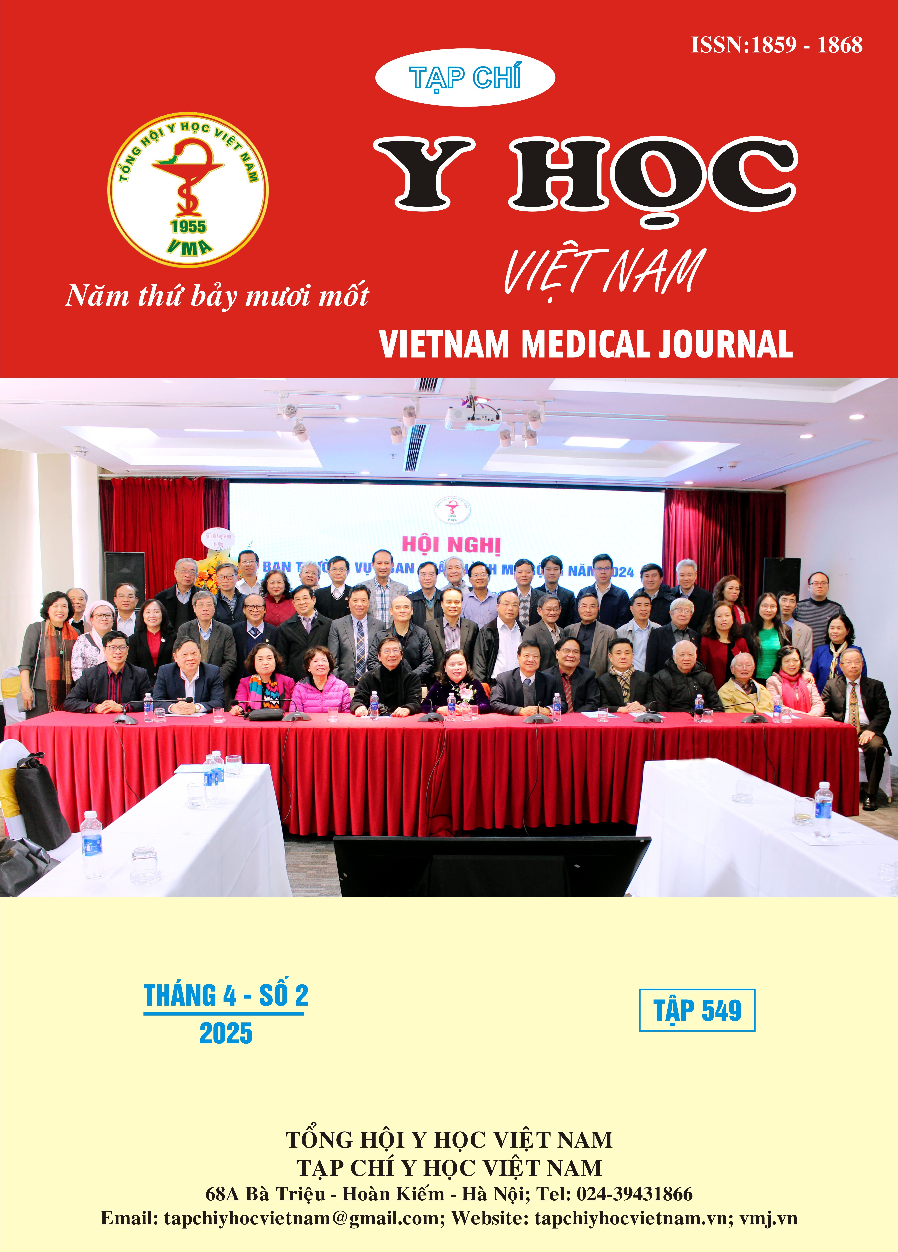SEROLOGICAL DIAGNOSIS OF CYTOMEGALOVIRUS IN PATIENTS WITH ERYTHEMA MULTIFORME, STEVENS-JOHNSON SYNDROME, AND TOXIC EPIDERMAL NECROLYSIS
Main Article Content
Abstract
A cross-sectional descriptive study was conducted on 54 patients with erythema multiforme (EM), 30 patients with Stevens-Johnson syndrome (SJS)/toxic epidermal necrolysis (TEN), and 30 healthy individuals to determine the seropositivity rates for cytomegalovirus (CMV) and its association with certain clinical features. The results showed that the rates of CMV-IgM and CMV-IgG positivity were 3.33% and 100% in the SJS/TEN group, 1.85% and 100% in the EM group, and 10% and 100% in the healthy group, respectively. The differences among the groups were not statistically significant. Within the EM group, there were no differences in CMV-IgM and CMV-IgG positivity rates between patients with diffuse skin lesions and those with acral, localized lesions, nor between patients with mucosal involvement and those without mucosal involvement. Similarly, in the SJS/TEN and EM groups, there were no differences in CMV-IgM and CMV-IgG seropositivity rates between patients with unknown causes and those with suspected drug-induced disease.
Article Details
Keywords
Cytomegalovirus, erythema multiforme, Stevens-Johnson syndrome, toxic epidermal necrolysis
References
2. Tagajdid MR, Doblali T, Elannaz H, Hammi S, Belfequih B, Mrani S. Reactivation of cytomegalovirus in a patient with stevens-johnson syndrome-toxic epidermal necrolysis. Iran J Med Sci. 2013;38(2 Suppl):195-197.
3. Bastuji-Garin S, Rzany B, Stern RS, Shear NH, Naldi L, Roujeau JC. Clinical classification of cases of toxic epidermal necrolysis, Stevens-Johnson syndrome, and erythema multiforme. Arch Dermatol. 1993;129(1):92-96.
4. Griffiths P, Reeves M. Pathogenesis of human cytomegalovirus in the immunocompromised host. Nat Rev Microbiol. 2021;19(12):759-773. doi:10.1038/s41579-021-00582-z
5. Seishima M, Oyama Z, Yamamura M. Erythema multiforme associated with cytomegalovirus infection in nonimmunosuppressed patients. Dermatol Basel Switz. 2001;203(4):299-302. doi:10.1159/ 000051776
6. Petrosino MI, Attanasi M, Marcovecchio ML, et al. Erythema multiforme syndrome associated with acute acquired cytomegalovirus infection. Arch Med Sci AMS. 2016;12(3):684-686. doi:10.5114/aoms.2016.59943
7. Carducci M, Latini A, Acierno F, Amantea A, Capitanio B, Santucci B. Erythema multiforme during cytomegalovirus infection and oral therapy with terbinafine: a virus-drug interaction. J Eur Acad Dermatol Venereol JEADV. 2004;18(2):201-203. doi:10.1111/j.1468-3083.2004.00806.x
8. Lee T, Bae YJ, Park SK, et al. Severe pneumonia caused by combined infection with Pneumocystis jiroveci, parainfluenza virus type 3, cytomegalovirus, and Aspergillus fumigatus in a patient with Stevens-Johnson syndrome/toxic epidermal necrolysis. Acta Derm Venereol. 2010;90(6):625-629. doi:10.2340/00015555-0977


